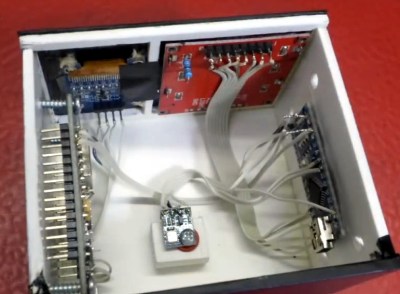25

Going outside to see the weather is time consuming and merely looking at a phone gets boring, which is what inspired YouTuber Mikey Makes to build a fun weather-telling device that displays the current conditions in a new format. Owing to his love of the old BBC weather symbols, which were placed on physical stickers rather than a computer screen, Mikey Makes wanted to replicate them and physically swap out various components in a mechanical fashion.
At the very front is a large gray cloud that is permanently fixed in place. If the conditions outside become cloudy, rainy, or snowy, small symbols for each state are rotated underneath the cloud using a stepper motor in conjunction with a DC gear motor. The symbols for partly cloudy and full sun were tougher to integrate since they are either behind the cloud or completely cover it. For partial sun, a series of disks rotate behind the cloud to slowly pull up the rays of sunshine that emanate outwards. Otherwise, full sun causes a large sun symbol to move across the front of the cloud and block it entirely.

Controlling all of these components is a MKR WiFi 1010, which pulls real-time weather data from the openweathermap API. Then depending on the desired movements, it sends signals to an A4988 stepper motor driver or an H-bridge module for the DC motors.
To see more about how this project works and its intricate mechanical design, you can watch Mikey Makes’ demonstration video below!
The post Check the weather from indoors with this MKR WiFi 1010-controlled contraption appeared first on Arduino Blog.



